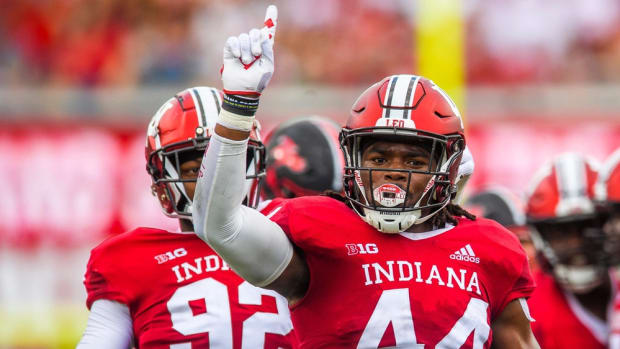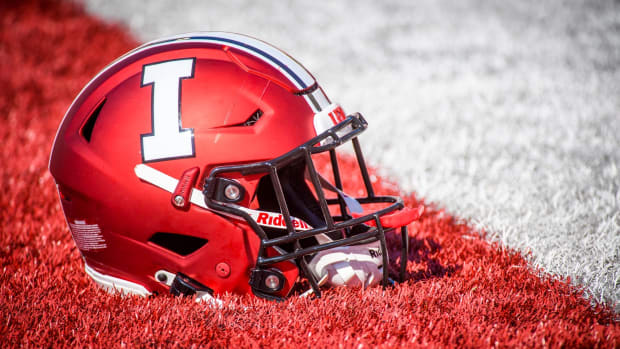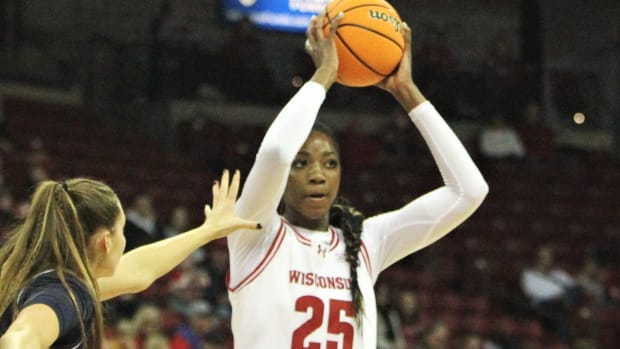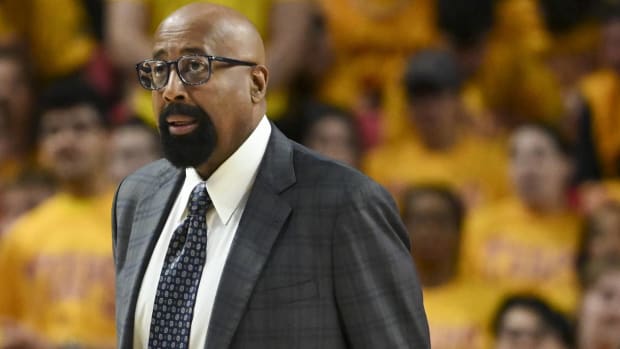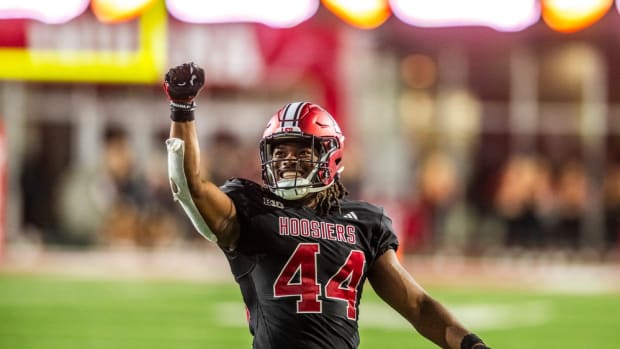My Two Cents: Learning How To Be a Winning Team Takes Time, Too
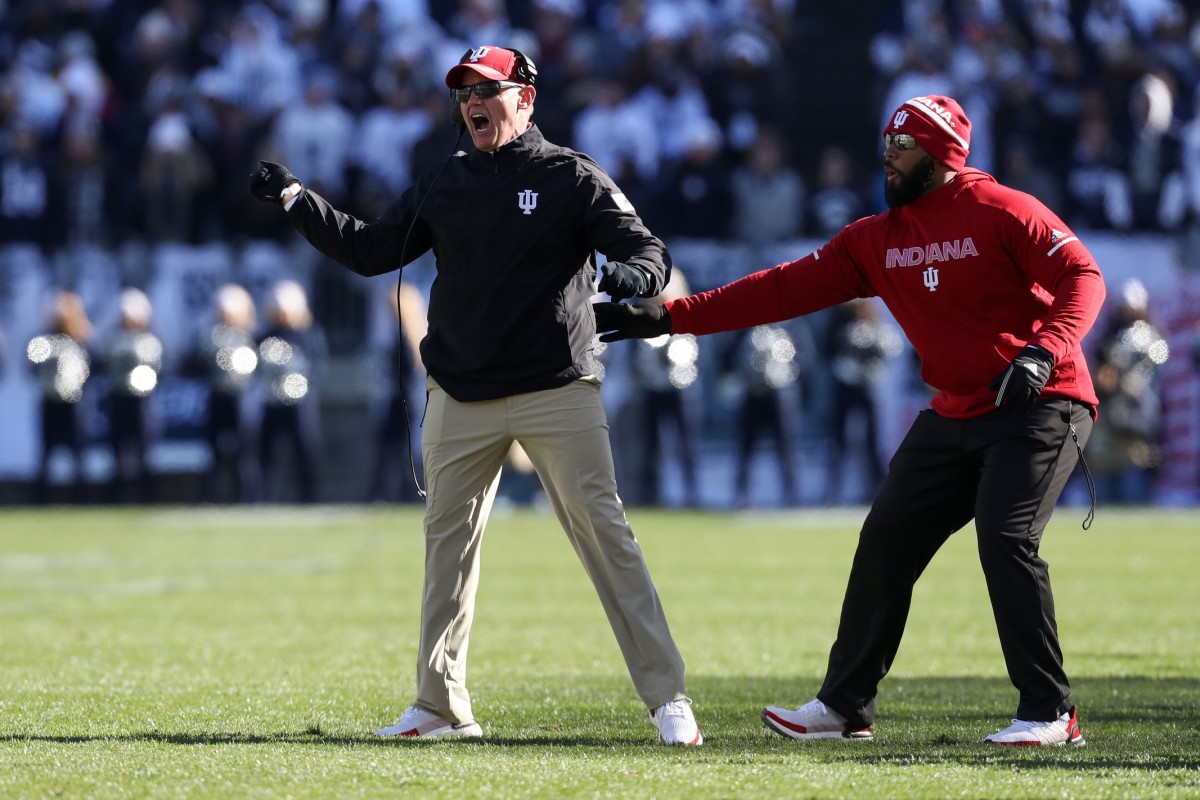
STATE COLLEGE, Pa. — This is somewhat uncharted territory these days for Indiana. It has seven wins for the first time in a dozen years and winning streaks and national rankings that haven't been accomplished for two decades or more.
But with being a winning team comes learning how to play — and win — as a winning team. And the Hoosiers, for all their scrap and fight and want-to, aren't quite there yet. That was proven Saturday in the 34-27 loss to Penn State that could have turned out differently with only a few plays, a few proper calls — and a few decisions from the sidelines.
When you've been around a long time, and I have, you've seen bad Indiana teams do desperate things, and when they didn't work, you threw up your hands, but in the big picture, it didn't really matter. Losing seasons, one after another, predicate that.
But now, with so much on the line, making a bad decision that might cost you a game can have massive repercussions. A better bowl, a record-setting winning streak, most wins in school history, moving up in the polls, etc.
That's all on the line.
Indiana had a chance to steal a win here Saturday against No. 9 Penn State. The 9-1 Nittany Lions, who were 14-point favorites, are a darn good team, but Indiana still kept matching them blow for blow. Peyton Ramsey, for Pete's sake, threw for 371 yards!
You would have never guessed that Indiana was 0-10 all time here, with almost all of those losses by double digits or worse.
Two critical issues were at play, two Indiana turnovers that really could have — and let's be honest, should have — been overturned, and one bad decision right after halftime that just might have made the difference.
First, the turnovers.
Momentum swings that shouldn't have been
Indiana had two turnovers in the first half, and it put them behind the eight-ball both times. Neither, quite frankly, should have happened.
Whop Philyor, Indiana's probable MVP so far this season, was involved in both.
The first came on a punt after Penn State's first possession, a three-and-out deep in its own end of the field. Philyor came up to field the punt, but when he realized he couldn't catch it, he backed away. But the ball bounced right toward him, and he thought about picking it up. The official said he touched it, and Penn State recovered. But the replays never showed a good look of him touching the ball. Not one.
And it hurt, because Penn State scored five plays later to take the early lead.
A few series later, Philyor caught a pass and started heading upfield. He got hit in the helmet by a Penn State helmet — and that was very clear on the replay — and he fumbled the ball as he went to the ground. Penn State recovered.
The play was reviewed for several minutes — Allen even called a timeout to be sure it got looked at — but the officials let the call stand. They missed that one, big time.
To me, they probably didn't have the guts to reverse it, because that would have meant reversing the turnover and tossing a guy for targeting. Letting it stand was taking the easy way out.
It also didn't help that Philyor was lost for the game. Indiana went into a bit of a funk after that, and didn't score on four straight possessions. Penn State scored 17 unanswered points to take a 13-point lead, which, in the end, turned out to be too much.
And then there's the bad decision
Let's set the stage here. It was 20-14 at halftime, and the stats between No. 24 Indiana and No. 9 Penn State were practically even. It was clear — to everyone — that this was going to be a game that was going down to the wire.
Indiana had won the toss and deferred, so it got the ball to start the third quarter. The Hoosiers, who were clicking offensively behind quarterback Peyton Ramsey, converted one first down. On the own 44-yard line, they ran Stevie Scott on third-and-1 and didn't make it, a rare failure on short-yardage, both Saturday and during this four-game winning streak that ended.
So it's fourth-and-1 and you're in the game. You have one of the best punters in the country at burying the ball down near the goal line. Just punt it, down six, and keep playing field position.
Right?
Right!
Instead, several things went terribly wrong. Allen burned a timeout — a timeout that is critically valuable in the second half of a close game on the road — and then came out on the field in a strange formation, with five guys lined up near the left sideline. It looked like a fake was on.
Penn State wasn't fooled, though. It kept four guys near the ball, where Indiana had only two guys on the line, Peyton Hendershot lined up short and Haydon Whitehead in punt formation. Long snapper Sean Wracher, a true freshman who's been sensational all year, snapped the ball to a stunned Hendershot, who wasn't expecting the ball because, apparently, Indiana had checked out of the fake. With no blockers around, he was tackled immediately for a loss, and a turnover on downs.
It all went terribly wrong. All of it.
"We've worked on that a bunch, so we have a call to check it and everything,'' Allen said. "It really wasn't there, and it was just a mistake. There was complete shock with everybody where the snap went the way it was. That's how you look at it.''
But there's also a different way of looking at it.
How about not fooling around with it at all?
I know hindsight is 20/20, but it's not about that. It was bad execution, certainly, but it was also a bad decision to be in that position in the first place.
If you're 2-7 and going nowhere, you fake it. If you're 7-2 and on the verge of being able to play with top-10 teams on the road, then you kick it away and keep playing. You don't waste a timeout, and you don't run the risk of a true freshman making a mistake.
Learning to coach at 7-2 takes getting used to, too, I suppose.
Having trust in what you do
Allen, his staff and his players all talked about coming up here and winning. They don't talk about moral victories, and they weren't about to on Saturday either. You saw a lot of that in their fight. This is absolutely the new Indiana.
When Penn State scored, Indiana would find a way to answer. They did it twice early, and they did it three times in the final 18 minutes with scoring drives.
They know how to move the ball. They know how to make plays on defense. And they absolutely know how to bury punts inside the 10.
They just don't have it ALL down pat quite yet. Counting the Michigan State loss on the road in late September, where a field goal with five seconds left was the difference, Indiana is just a few plays — and a few decisions — away from being 9-1 right now.
How much would that have changed the narrative about this season?
They're getting closer. Just a few more plays.
But also, a few better decisions.

